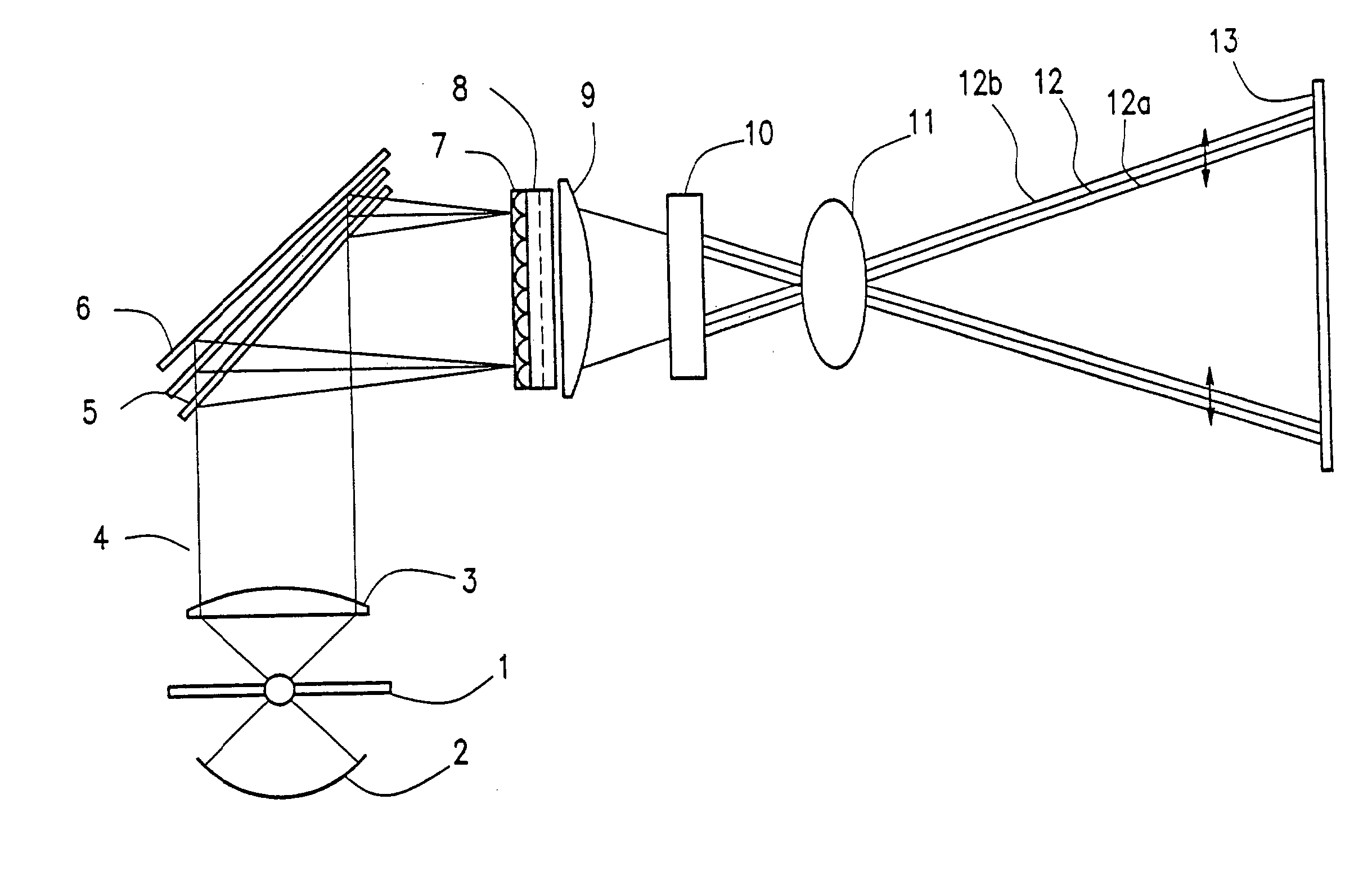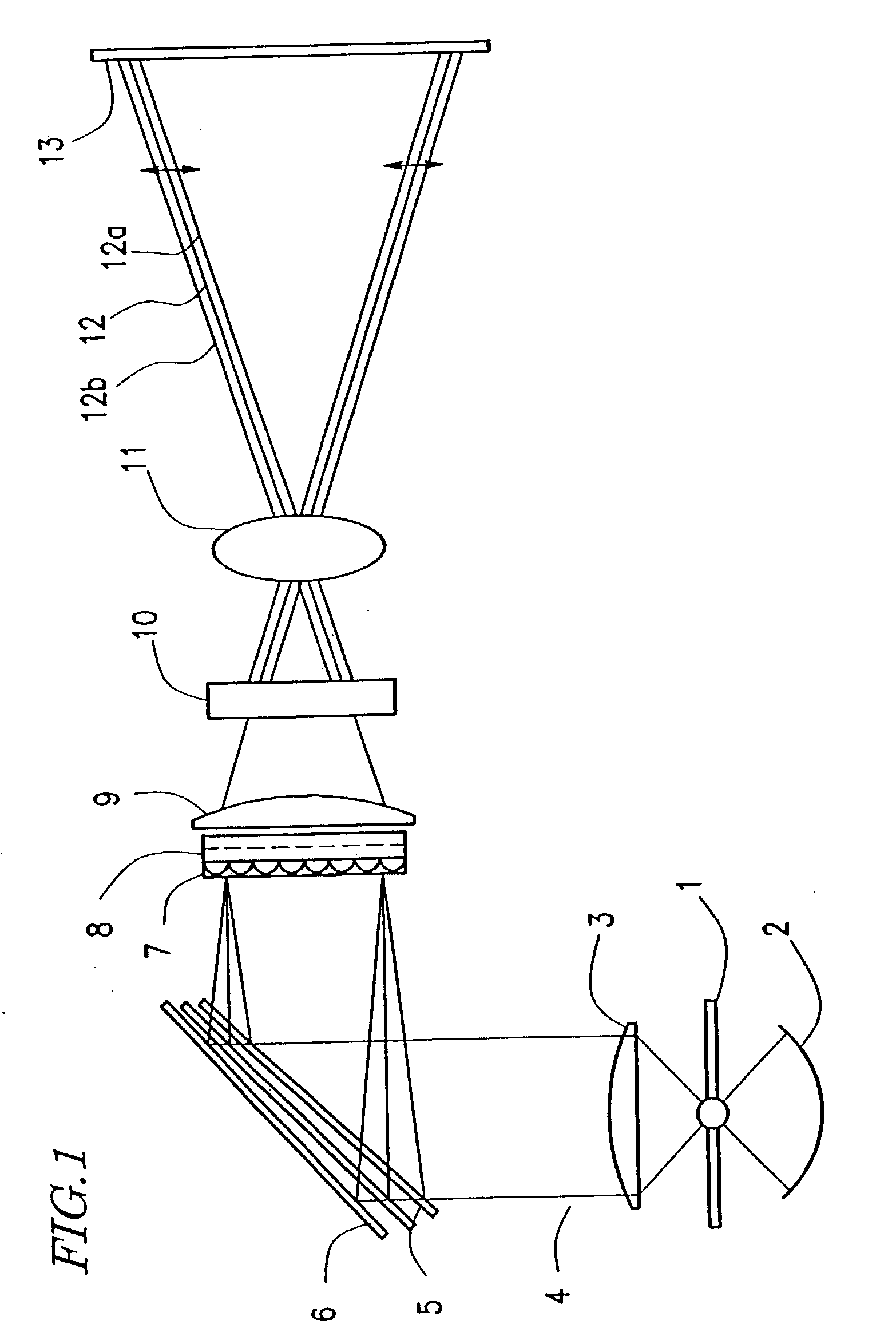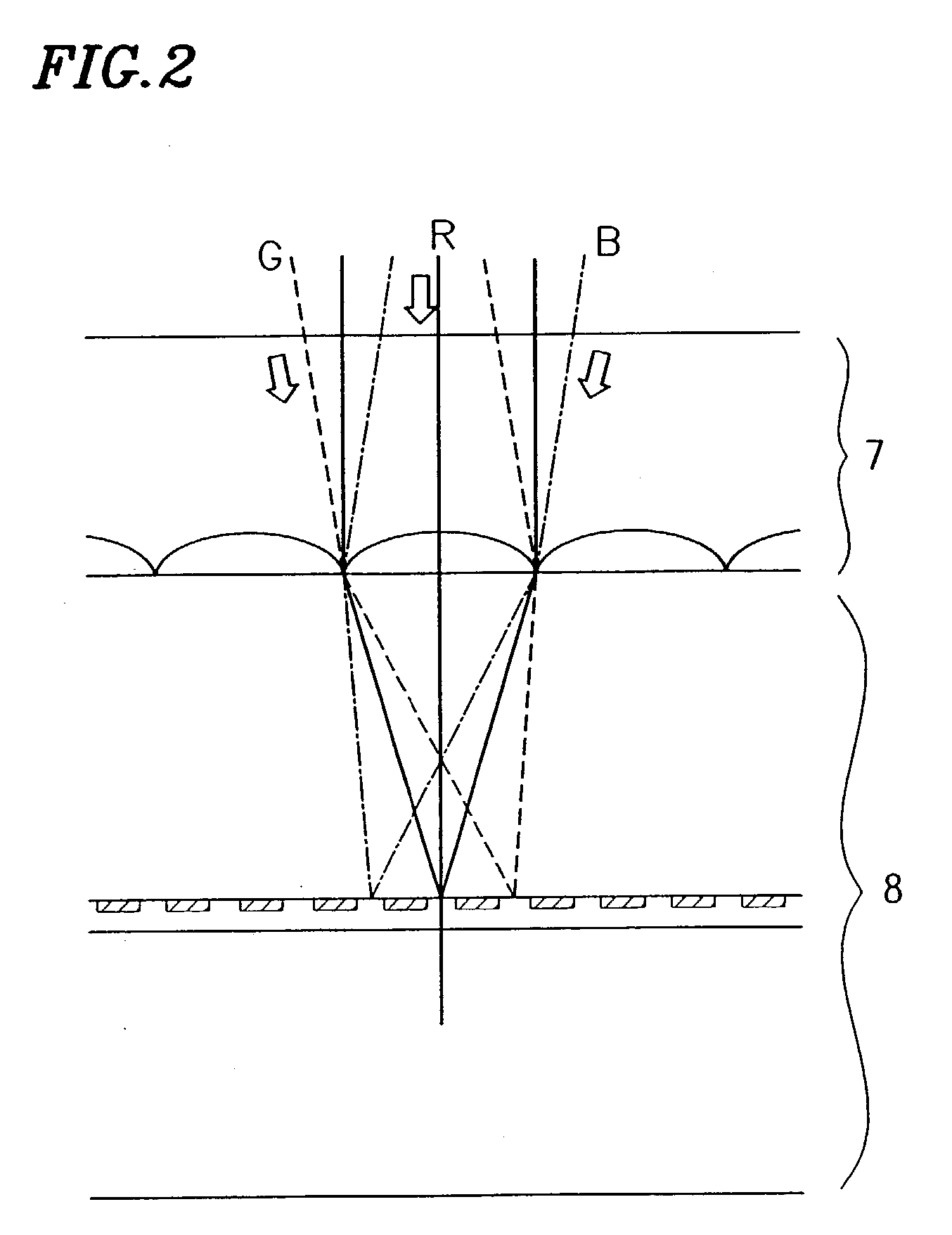Projection type image display device
a projection type and image display technology, applied in the field of projection type image display devices, can solve the problems of reducing the efficiency of light sources with great power dissipation, requiring a complicated optical system and a greater number of components, and a large number of components, so as to reduce the effect of smearing or ghosting, reducing the cost of light sources, and improving the efficiency of optical systems
- Summary
- Abstract
- Description
- Claims
- Application Information
AI Technical Summary
Benefits of technology
Problems solved by technology
Method used
Image
Examples
embodiment 15
[0387] Embodiment 15
[0388] The image shifter of this embodiment is obtained by preparing two pairs of elements such as those shown in FIG. 32 (or FIG. 33) and arranging those two pairs of elements in series on the optical path as shown in FIG. 53. Specifically, in this embodiment, the image shifter is formed by using crystal plates g3 and g4 having birefringence. By using this image shifter, one of three different locations on the projection plane can be selected according to the voltage application states of the two liquid crystal layers on the light incoming and outgoing sides on the optical path. One of the three different locations is selected according to a particular combination of the voltage application state (i.e., ON or OFF) of the first liquid crystal layer on the light incoming side and the voltage application state (i.e., ON or OFF) of the second liquid crystal layer on the light outgoing side.
[0389] FIG. 55 schematically shows how the states of the liquid crystal layer...
embodiment 16
[0399] Embodiment 16
[0400] The image shifter of this embodiment is obtained by preparing two pairs of elements such as those shown in FIG. 36 and arranging those two pairs of elements as shown in FIG. 54.
[0401] The image shifter of this embodiment is similar to the image shifter of the fifteenth embodiment in that the image shifting direction is determined by the ON / OFF states of the voltages to be applied to the respective liquid crystal layers. The features of this embodiment will be described with reference to FIGS. 57 and 58.
[0402] FIG. 57 schematically shows how the states of the liquid crystal layers on the light incoming and outgoing sides change with the voltages applied. For example, there are two possible states depending on whether or not a voltage is applied to the liquid crystal layer on the light incoming side. Each of these two different states further branches into two according to the voltage application state of the liquid crystal layer on the light outgoing side.
[...
embodiment 17
[0414] Embodiment 17
[0415] A projection type image display device according to this embodiment basically has the same configuration as the counterpart of the first embodiment described above. The main difference between this and first embodiments is that an image subframe shifting pattern, which can be used effectively to obtain an even sharper image, is adopted in this embodiment. Thus, only this difference will be described.
[0416] In the first embodiment described above, the n+1.sup.st image frame (where n is a positive integer) is made up of three image subframes, which are shifted in the same direction as the image subframes that make up the n.sup.th image frame as shown in FIG. 12. In this embodiment, one image subframe shifting pattern consists of six image subframes per period as in the thirteenth embodiment described above. In the thirteenth embodiment, the subsets 1A and 2B are combined as shown in FIG. 44, thereby making up a shifting pattern for one period. Accordingly, t...
PUM
 Login to View More
Login to View More Abstract
Description
Claims
Application Information
 Login to View More
Login to View More - R&D
- Intellectual Property
- Life Sciences
- Materials
- Tech Scout
- Unparalleled Data Quality
- Higher Quality Content
- 60% Fewer Hallucinations
Browse by: Latest US Patents, China's latest patents, Technical Efficacy Thesaurus, Application Domain, Technology Topic, Popular Technical Reports.
© 2025 PatSnap. All rights reserved.Legal|Privacy policy|Modern Slavery Act Transparency Statement|Sitemap|About US| Contact US: help@patsnap.com



